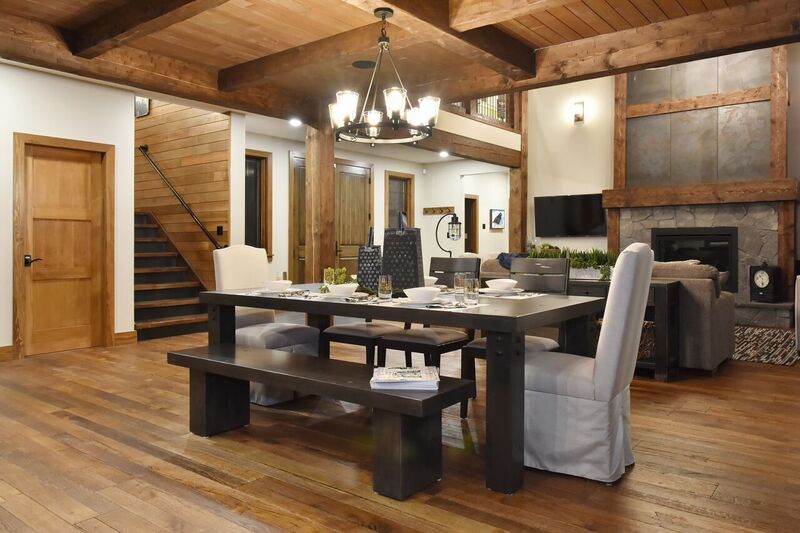
Putting on stains or sealants is crucial to keep up the appearance and health of your timber frame house. Those looking to live in a timber frame house or log cabin should know the amount of care is needed to support this type of building. Whether you are looking to get a timber frame house, cabin or if you already have one, we at Hamill Creek have answered some common questions about timber frame and log cabin stains.
What different types of stains and sealants are there?
Many kinds of timber frame sealants and stains exist, each with their own set of positives. A lot are premixed, like oil-based, water-based and sealer stains. These tend to be easier to apply and are available everywhere. You can change the color of the stain by mixing two colors to get the shade you want, but be sure the bases are the same, i.e. oil-base with oil-base, water-base with water-base.
Timber frame sealants are a mixture of oil stains and wax or varnish. They are applied in one-step on wood surfaces. They don’t require several build-up finishes and therefore save you a lot of time.
Tobacco makes a great natural dye and produces a light, ‘old-pine’ look to your wood. Use it on the majority of woods—from staining poplar to refinishing maple—and it’s easy to make as well.
When should a timber finish be applied?
Apply two coats first then add one to two more depending on how the finish looks before the frame is raised. You don’t have to wait for each coat to dry; using a wet-on-wet approach is perfectly okay. The stain or sealant should feel dry to the touch a week after you apply it, but it won’t completely set in for an additional week or two.
Once the coating has dried, make sure all surfaces and joints are filled. Then wipe down the surface, look for areas that should be touched up and use a rough pad to remove scuffs and abrasions.
The surface must be cleaned of grime, dirt and dust before you begin this process or else that debris will become part of the wood finish.
When applying timber frame stains and sealants it’s wise to apply it with something light. You can use a lamb’s wool applicator, an old cotton shirt, pump-up or airless sprayers, or an oil brush to put on your timber frame sealant. Most paint rollers aren’t precise enough for this type of work, but there are short nap lamb’s wool rollers that work better than conventional ones.
Can I use a single finish for both inside and outside?
You can use the vast majority of outdoor stains and sealants indoors as they don’t present a risk of harm or bad smells.
An indoor finish should not be used outdoors, however. Indoor stains and sealants don’t have the additives that protect the finish from the sun’s UV light and therefore an interior log cabin stain can never be used on the exterior. Also, it’s never a good idea to use furniture finish, like varnish, on timbers.
Do you use different types of finishes for different climates?
Absolutely. The same type of stain or sealant that works well in California or Arizona will not do the same in Florida or Hawaii.
If you live in a humid climate it’s vital to work with something that fights mildew, mold and algae as they all thrive where there is a lot of moisture in the air. It bears repeating that cleaning the surface with a deep cleanser specially made for wood is very important.
Conversely, if you live in a dry, sunny area you have to account for that in your timber frame stain or sealant choices. You want something with strong UV protection as UV exposure is hard on wood. A good rule of thumb is that pigment means protection, so search for a finish with a deep color. The problem is deep color means you probably won’t be able to see the grains in your wood. If you want to see the grains, you should go with a semi-solid pigmented stain.
As always Hamill Creek is here to assist you with all of your timber frame sealant needs. To find out more about caring for a timber frame or log cabin home, visit our website.
Blog Archive / The Differences Between Building Cabins in Different Climates